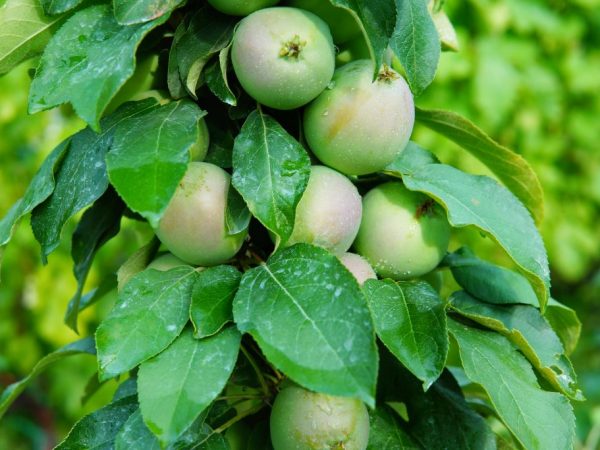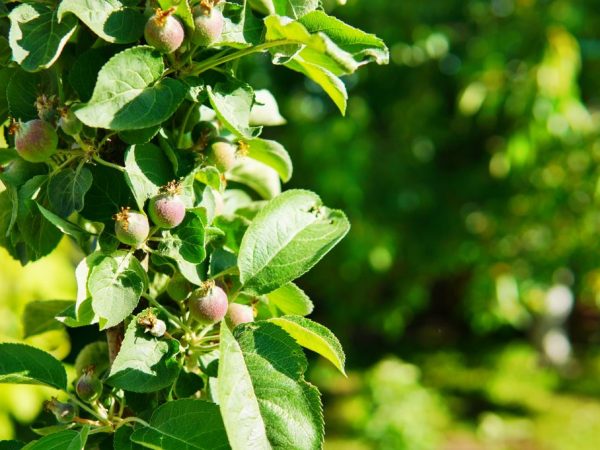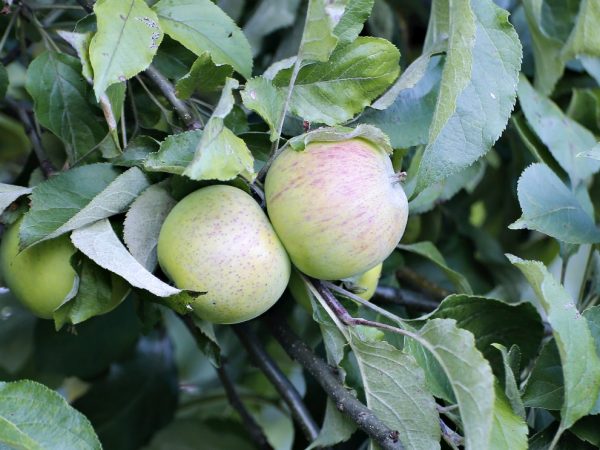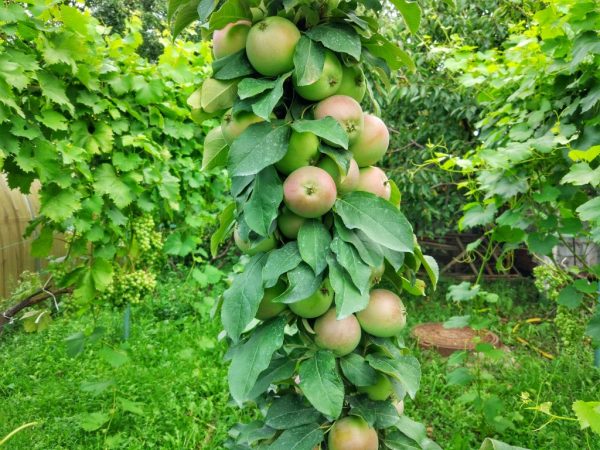Description of the columnar apple tree Triumph
The columnar apple tree Triumph was bred in 2015, and its creators are V. Kichina and N. Morozova.
- general characteristics
- Taste
- Drought tolerance
- Winter hardiness
- Disease and pest resistance
- Transportability
- Growing regions
- Using apples
- Selection of seedlings
- Landing
- Landing dates
- Care
- Watering
- Top dressing
- Pruning and shaping the crown
- Preparing for winter
- Reproduction
- Features of ripening and fruiting
- Harvesting and storage
- Subspecies and variants
- Gardeners reviews

Description of the columnar apple tree Triumph
general characteristics
External description of the Triumph apple tree:
- the trunk resembles a slender column;
- the height of the tree does not exceed 2 meters, therefore it is classified as semi-dwarf;
- the crown is compact and small;
- the variety has a relatively low frost resistance, but it is quite resistant to various diseases.
- fruits ripen in the autumn season;
- abundant fruiting and high taste of fruits;
- the appearance of apples is appetizing: the snow-white, crunchy pulp of the fruit effectively contrasts with the dark red surface.
Taste
The main advantage is the high taste of the fruit. They have a regular flesh structure, slightly crunchy and aromatic.
The size of the fruits is quite impressive: some can reach a weight of 200 g.
Light acidity sets off the sweet taste of apples, leaving behind a pleasant honey aftertaste.
Yield
The small size of the tree can in no way affect the number of fruits.
From one apple tree, with good care in the fall, you can collect up to 15-20 kg of juicy fruits.
Pollinators
The Triumph variety is partially prone to self-pollination. But to increase the fertility of trees, it is recommended to place them next to other fruit trees. Papirivka, Bill West and others are perfect.
Drought tolerance
The apple tree needs systematic watering. On hot summer days, it is necessary to moisten the soil at the root system of the plant daily. In moderate weather, watering can be reduced to 1 time in 3 days.
Gardeners recommend periodically irrigating the branches of the plant, but this should be done only after sunset.
Winter hardiness
A characteristic feature of the variety is its low resistance to low air temperatures. In regions where the degree falls below -10 ° C, the trees need insulation.
This is best done before the onset of cold weather. Insulate the soil around the trunk with sawdust, straw or spruce branches.
Disease and pest resistance

This apple variety is not picky
According to the description of the variety, the Triumph apple tree has gene immunity to scab.
The culture has a high level of resistance to other common diseases. Thanks to this, it does not require additional treatment from harmful insects.
Transportability
The fruits of the columnar apple do not have a long shelf life.
During transportation, it is necessary to arrange the fruits so that they do not touch each other, thereby provoking damage.
Growing regions
Triumph grows well and bears fruit in temperate regions.The low level of frost resistance makes it impossible to grow it in areas with severe and long winters.
In very arid regions, apple trees require systematic watering.
Using apples
Apples can be used both fresh and served with various culinary treatments. They make delicious jams, preserves, compotes.
As an ingredient, they are added to salads, main dishes, sauces, etc. They make aromatic pastries.
Selection of seedlings
It is better to plant seedlings in early spring - even before the buds begin to come to life on the trees. It is also allowed to plant a crop in September-October in the presence of warm weather.
Better to purchase annual plants. They take root much faster.
When choosing seedlings, special attention should be paid to the root system. According to the description, it should not have signs of rot, it is not recommended to have too dry soil on the rhizome.
Landing

Apple trees do not like winds
For planting Triumph, it is advisable to choose areas with free access to sunlight, open, but protected from drafts.
The soil at the planting site must be rich in minerals and moisture permeable for a sufficient level of air and moisture circulation in the soil.
Landing dates
It is better to plant seedlings in spring.
If the plant was purchased in a container, it can be planted almost at any time of the year.
If you plan to plant in the spring, it is better to prepare for this in the fall: you should dig holes and apply fertilizer to them.
In the spring, the seedlings will fall into the fertilized and caked soil during the winter, which favorably affects the growth and development of the culture.
Landing scheme
When planting one or two trees, there are no problems. If you want to plant a whole apple orchard, then you should follow some recommendations.
- It is recommended to plant in lowlands. This will provide the seedlings with a better supply of moisture to the rhizome, and also reduce the chances of freezing in the cold season.
- Young trees should be placed in a row, leaving a distance of at least 50 cm between the plants.
- The row spacing should be 1 m.
Care
Care includes watering, fertilizing, crown formation, various works on preparing plants for wintering, processing with special means.
Thanks to competent and proper care, the Triumph apple tree will bear fruit as much as possible.
Watering
The first years after planting, systematic and intensive watering is required. To keep moisture as long as possible, it is recommended to mulch the soil around the trunk.
Columnar apple trees do not have a taproot, their root system is located within a radius of 25 cm around the trunk. On summer days, watering must be done at least once every 3 days.
In hot and sultry weather, water every other day or daily.
Once a month, after sunset, external irrigation of the plant is recommended.
Top dressing
Due to its abundant fertility, the apple tree takes away most of the nutrients from the soil. This is the main reason for additional fertilizing of the plant.
In the spring they are fertilized with organic substances, such as chicken droppings or manure, which are placed around the tree trunks. In early spring it is recommended to carry out external treatment of trees (urea solution 7%).
In the first half of summer, the tree is especially in need of feeding. For this, mineral fertilizers for complex purposes are used. Closer to autumn, the trees are fertilized with potassium.
Pruning and shaping the crown

The apple tree has no ramifications
According to its structure, the columnar apple tree should not have branches, therefore, only the lateral branches are pruned.
Pruning provides for the following pattern: the more is cut, the more it will grow back.
If you remove more than half of a branch, leaving only a few eyelets (buds), after a while you will get the same number of shoots.
When pruning, it is important not to snag the main trunk. Cutting it off will provoke branching.
Preparing for winter
With the arrival of autumn, you should begin to prepare for wintering. The root system must be insulated with wood chips or spruce branches. Warming should be done in such a way as to protect the culture not only from cold weather, but also from pests.
If straw was used as a mulching agent throughout the spring and summer, then it should be removed before winter. This will protect the tree from being damaged by rodents.
Reproduction
Description of breeding methods:
- grafting of a varietal cuttings;
- seeds;
- air layering.
Growing seedlings on your own is quite problematic. To simplify the task, it is better to purchase them in specialized nurseries.
Features of ripening and fruiting
In early summer, after flowering, the tree begins to give ovaries.
During ripening, as the fruit grows, if necessary, props are placed under the branches to hold the weight.
Correct and rational care will make it possible to get the most bountiful harvest. During the ripening period, the apple tree is especially in dire need of timely feeding and preventive treatments from pests.
Harvesting and storage
With the onset of autumn, the harvest begins. The apples are neatly cut off along with the stalk.
Broken or damaged ones will not last long.
Apples are recommended to be placed in dry boxes with ventilation holes. The layers are separated by a suitable material (hay, paper, etc.).
The harvested crop is placed in a cool place for storage. The integrity of the fruit should be reviewed periodically.
Subspecies and variants
Among the subspecies, the following are distinguished:
- standard subspecies;
- dwarf apple tree;
- semi-cultural.
Each of them has unique characteristics.
Gardeners reviews
The Triumph apple variety was liked by gardeners. In addition to a rich harvest of fragrant fruits, these trees cause aesthetic pleasure, they can be located at a distance of 1 m from each other.
Even an adult apple tree is small in size, so it can be grown in almost any convenient place, everywhere it looks organic and appropriate. Looks especially beautiful along the paths.
Other benefits:
- Fruiting can begin as early as the 2nd year after planting.
- The tree is resistant to disease.
- The fruits are of high taste.
Disadvantages:
- The variety is not among the winter hardy.
- The fruits of the plant are not subject to long-term storage; it is recommended to use them within a month after harvesting.

